11 Best Shrubs For Winter Containers
Create stunning containers that shine all winter long with evergreen foliage and winter blooms.
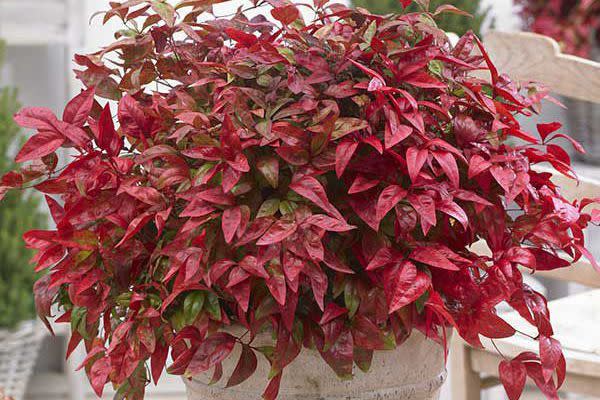
Dress up your porch or patio with gorgeous evergreen shrubs perfect for winter containers. The key to fabulous winter containers is evergreen foliage, but evergreen doesn't have to mean just green. Look for variegated varieties of your favorite shrubs for added interest or choose plants with golden or purple foliage. Winter blooms are a bonus. Here are shrubs that will make your winter containers dazzle. Be sure to check out the winter container tips below to guide your selection.
Winter Container Tips
When selecting shrubs for winter containers, it is important to consider cold hardiness. Because the roots are not insulated beneath the soil, plants in containers cannot withstand the same cold temperatures they could if planted in the ground. To account for this difference, select plants that are hardy to temperatures two hardiness zones colder than local conditions. For example, if you live in USDA hardiness zone 8, you will want to use plants that are hardy to zone 6 in your containers. The ratings listed are adjusted accordingly. Experienced gardeners often identify warmer niches in the garden where container plants can be grown beyond this range.
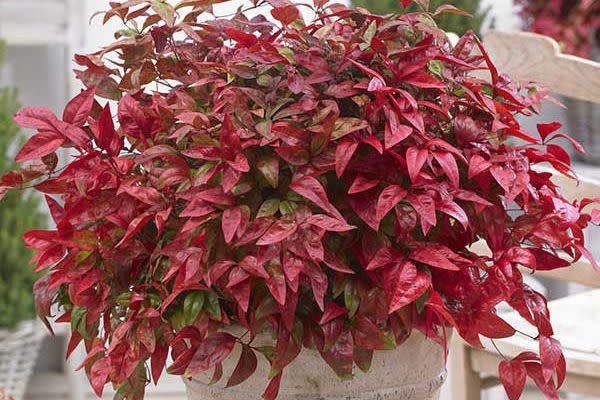
Most of the plants listed here are evergreen and will require occasional watering throughout the winter. Watering plants before an expected freeze will help moderate temperatures in the container. Be sure to use frost-proof containers such as those made of metal, stone, or fiberglass. Glazed pottery will stand up to winter temperatures much better than terracotta pots, which are prone to cracking.
The USDA hardiness zones listed in this article are adjusted for overwintering plants in outdoor containers.
Burning Love™ Leucothoe
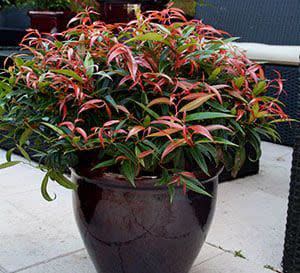
Botanical Name: Leucothoe keiskei 'Opstal 50'
Sun Exposure: Partial, shade
Soil Type: Well-drained
Soil pH: Acidic, slightly acidic, neutral
This compact leucothoe, growing just 2½ feet tall and wide, is perfect for containers. It thrives in shade, making it an excellent selection for covered porches and patios. The colder months are when this native beauty shines. Green summer foliage takes on red and purple hues in fall that carry through until spring. Best suited for containers in USDA hardiness zones 7–10.
Highlights™ Arborvitae
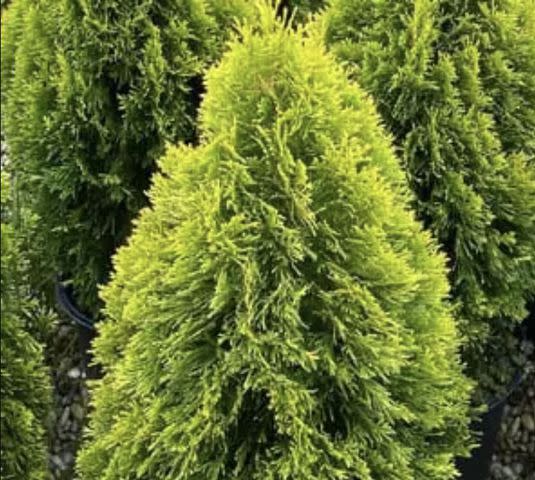
Botanical Name: Thuja occidentalis 'Janed Gold'
Sun Exposure: Full, partial
Soil Type: Well-drained, clay, sandy, loamy
Soil pH: Neutral, alkaline
A standout selection of arborvitae with yellow-gold foliage all year long, Highlights™ arborvitae brings vibrant color to winter containers. As a bonus, plants thrive in the southern summer heat without burning. Give this beauty plenty of sunshine and water regularly. Grow in winter containers in USDA hardiness zones 7–8.
Blush Pink™ Nandina
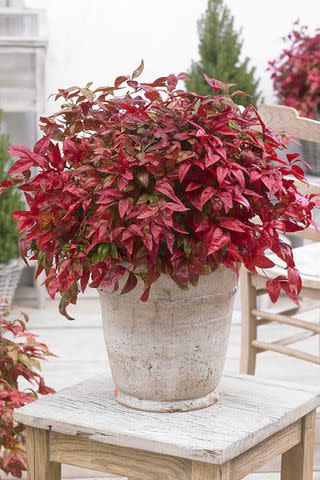
Botanical Name: Nandina domestica 'AKA'
Sun Exposure: Partial, shade
Soil Type: Moist, well-drained
Soil pH: Slightly acidic, slightly alkaline
If you are looking for a nandina with phenomenal winter color, look no further than Blush Pink™ nandina. Summer foliage is light green tinged with blush pink hues, but autumn really brings out the color. Plants turn completely red in fall and the color only intensifies through winter. This compact nandina grows just 2 feet tall by 1½ to 2 feet wide, perfect for winter containers in USDA zones 8–10.
Jazz Hands® Dwarf Pink Fringe Flower
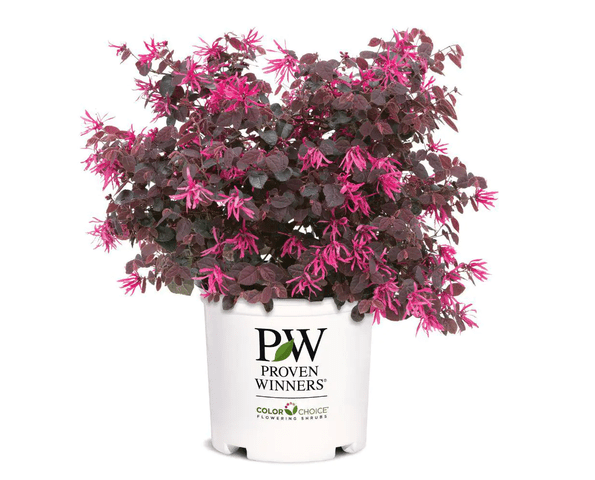
Botanical Name: Loropetalum chinense 'Kurenai'
Sun Exposure: Full
Soil Type: Moist, well-drained, sandy, loamy
Soil pH: Acidic
Boasting rich purple foliage all year, this compact loropetalum adds plenty of pizzazz to winter containers. The foliage contrasts beautifully with golden hues when planted in mixed containers. Spring brings hot pink flowers and cranberry-hued new growth. This selection is only suited to winter containers in warmer areas of the South, zones 9 and above, but is well worth mentioning for its fabulous foliage.
Night Light® Hinoki Cypress

Botanical Name: Chamaecyparis obtusa 'Conschlecht'
Sun Exposure: Full, partial
Soil Type: Moist, well-drained
Soil pH: Slightly acidic, neutral
Pot up a ball of sunshine to ignite the winter landscape with Night Light® hinoki cypress. This shrub is for the more exposed containers in the garden. Plants tolerate full sun and winter winds. Branch tips take on bronze hues as temperatures dip, leaving interior foliage a chartreuse green. The dense mounding habit creates adorable containers in zones 7–8.
'Little Heath' Pieris

Botanical Name: Pieris japonica 'Little Heath'
Sun Exposure: Partial
Soil Type: Moist, well-drained
Soil pH: Slightly acidic
A graceful variety of pieris, 'Little Heath' boasts luxuriant deep green foliage edged in white. Pieris plants form flower buds in summer and the pearl-like buds hang in clusters all winter long until opening in spring. Container-grown pieris needs a sheltered location in winter away from drying wind, such as against the house, under a covered patio, or in an enclosed courtyard. Provide dappled shade and pay attention to water needs in winter. Pieris can grow in winter containers in zones 7–9.
Autumn Princess® Encore Azalea
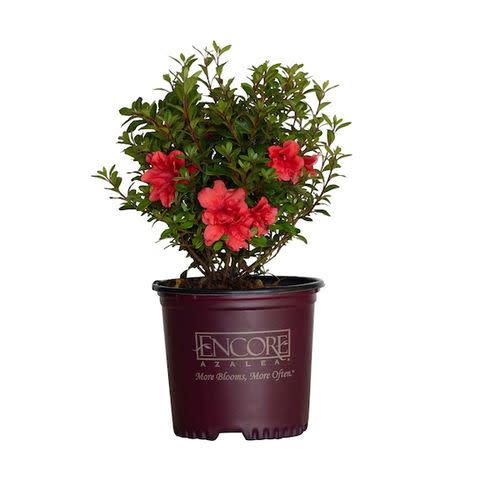
Botanical Name: Rhododendron hybrid 'Roblea'
Sun Exposure: Partial, full
Soil Type: Well-drained
Soil pH: Slightly acidic
All Encore® Azaleas are evergreen, but some varieties go beyond just green, with colorful winter foliage in shades of purple, bronze, and red. Autumn Princess® turns a lovely ruby shade, providing winter color to rival its ruffled pink blooms. A dwarf variety perfect for container life, Autumn Princess® azalea matures to 3½ feet tall by 3 feet wide. Best suited for containers in zones 7–9.
Golden Dream Boxwood
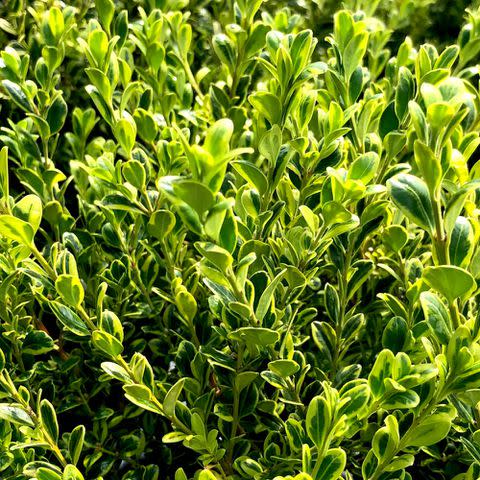
Botanical Name: Buxus microphylla 'Peergold'
Sun Exposure: Partial, full shade
Soil Type: Moist, well-drained, loamy
Soil pH: Slightly acidic, slightly alkaline
Boxwoods are a staple in the winter garden, providing structure and color all year. This variegated variety brings warm golden hues to brighten winter days. Plants grow slowly to a mature size of 2 feet tall and wide, forming a dense mound of green and gold foliage. Boxwoods tolerate a range of sun exposures, making them easy to use in containers. Golden Dream boxwood thrives in winter containers in USDA hardiness zones 8–9.
Juniper
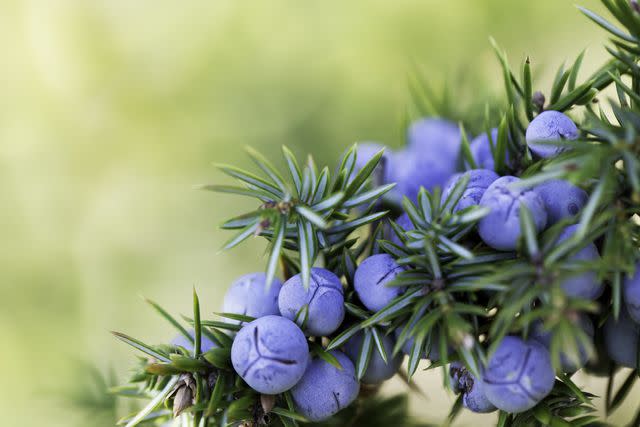
Botanical Name: Juniperus
Sun Exposure: Full
Soil Type: Well-drained, clay, sandy
Soil pH: Slightly acidic, neutral, slightly alkaline
Plant this evergreen in winter pots for a dramatic focal point. Their tall column shape and slow growth make them perfect for adorning a walkway or an entryway. Some junipers bear stunning bluish berries during colder months. This drought-tolerant plant grows in almost any soil, making it an easy choice for winter containers in USDA zones 2-5. Give junipers plenty of sun and well-drained soil as they do not like to sit in water.
Mahonia
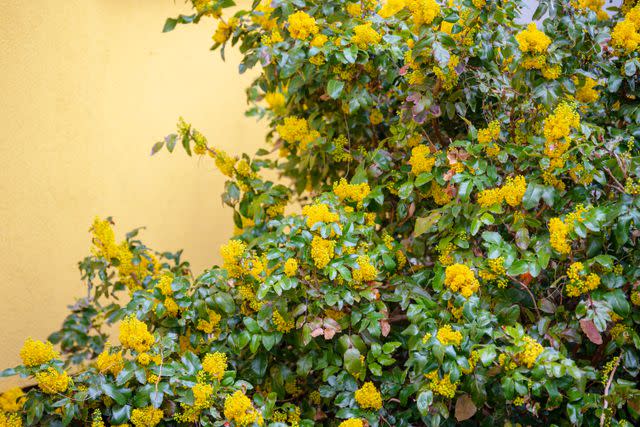
Southern Living/Vlasova Evgeniya
Botanical Name: Mahonia spp.
Sun Exposure: Partial
Soil Type: Moist, well-drained
Soil pH: Alkaline
The slow-growing Mahonia shrub resembles a holly, but its leaves change colors with the seasons. Yellow flowers bloom in late winter to spring. After blooming, its fruit adds a pop of blue or red to the garden. Add these easy-to-care-for evergreens to containers in zones 4-9.
Camellia
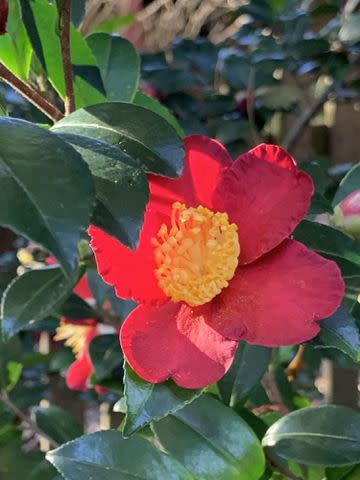
Botanical Name: Camellia spp.
Sun Exposure: Full, partial
Soil Type: Well-drained, clay, loamy, sandy
Soil pH: Acidic, neutral
Camellias are a great pick for winter color. Depending on the variety, blooms appear from fall through spring. As the name suggests, ‘Yuletide’ Camellia flowers bloom around the holidays. Plant in containers in USDA zones 5-7 using a well-draining potting mix made for azaleas and camellias.
For more Southern Living news, make sure to sign up for our newsletter!
Read the original article on Southern Living.

